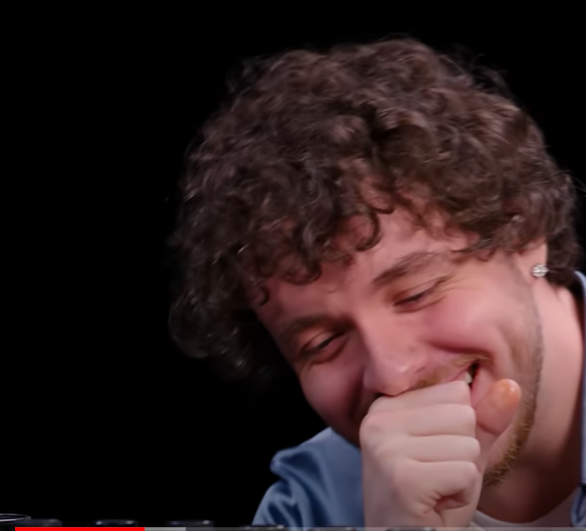Jack Harlow’s Still Getting Cuter, Even After That Halftime Show.
/Image Courtesy of Daily Mail
Fresh out of a failed halftime show, Jack Harlow is feeling resentment from every direction. The social media platform X is riddled with criticisms against the acclaimed rapper. Some users have even said that he “ruined their Thanksgiving,” and they’ve got a point.
Whether we’re talking about the set design, described as having a budget of “49.99,” or the one and only backup dancer that Barstool Sports referred to as an “ASL translator,” that performance didn’t pass anybody’s vibe check.
If I were in Harlow’s position right now, I’d be burying my head in the sand, and I think that most people would say the same. But Harlow isn’t most people, and he’ll be just fine.
It’s easy to forget that there was a time in Jack Harlow’s life when he wasn’t the coolest guy in the room. Before the viral interview clips, where he charmed us all, Harlow was putting the work in, and sometimes that work sucked.
Now, I’m not talking about the quality of his music. What I’m talking about are the early shows he’s referred to as “character builders.” Jack Harlow wasn’t an overnight sensation. Not so long ago, he was doing tours with just as many people in his posse as there were in his crowds.
In a 2021 interview with Sean Evans, host of the YouTube show Hot Ones, he addressed this, saying, “I had some humbling shows, but they prepared me for this…I think it made me a better performer.”
Image courtesy of First We Feast
Sure, an empty show is an entirely different type of embarrassment from a mediocre one seen by millions, but that kind of experience builds character. The type of character that can carry the Kentucky rapper through the relentless mockery aimed at him right now. Being a millionaire will probably help, too.
Since his viral hit “What’s Poppin” hit the billboard charts back in 2020, Harlow hasn’t wasted any time in making the most of his success. In 2021, Forbes estimated that the artist made an easy five million from brand deals and his 44 million monthly listeners on Spotify that year, and there’s no evidence to suggest that his annual income has diminished since.
But even without the money, Harlow has no reason to fret over one botched performance. Because, at the end of the day, he produces good rap music.
From early mixtape tracks like “Dark Knight” to mainstream hits like “First Class,” Harlow’s music hasn’t failed to entertain. A big part of that is its compatibility with social media like TikTok. “What’s Poppin” is undoubtedly the best example of this. In 2020, Vulture magazine even speculated that it might be “the song of the summer” after it appeared in over 400,000 TikToks in the six months after its release.
And if TikTok success is like getting struck by lightning, Jack Harlow’s been struck twice. After winning the world over with “What’s Poppin” and going viral, he did it all again. On April 1st, 2022, Harlow teased a 13-second clip of the track “First Class.” A week later, the same clip had been featured in 50,000 TikToks. The complete version of “First Class” went on to become the rapper's second number-one single when it was released. The man has a strategy, and it works.
Image courtesy of vogue
So, was that halftime show an embarrassment for everyone involved? Yes. But will it damage Jack Harlow’s career in the long run? No. He’s going to be just fine.
I’m Owen, and you can think of me as the group’s roadie, just along for the ride. I’m the type of guy who hops in his car, turns the discovery playlist on and lets the algorithm choose his music. This has led to my commutes having backtracks that range from metal to pop and everything in between. Maybe I’ll be more decisive about my listening habits one day, but for now, I’m just going to ride the soundwave.













